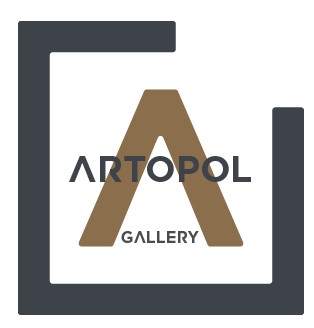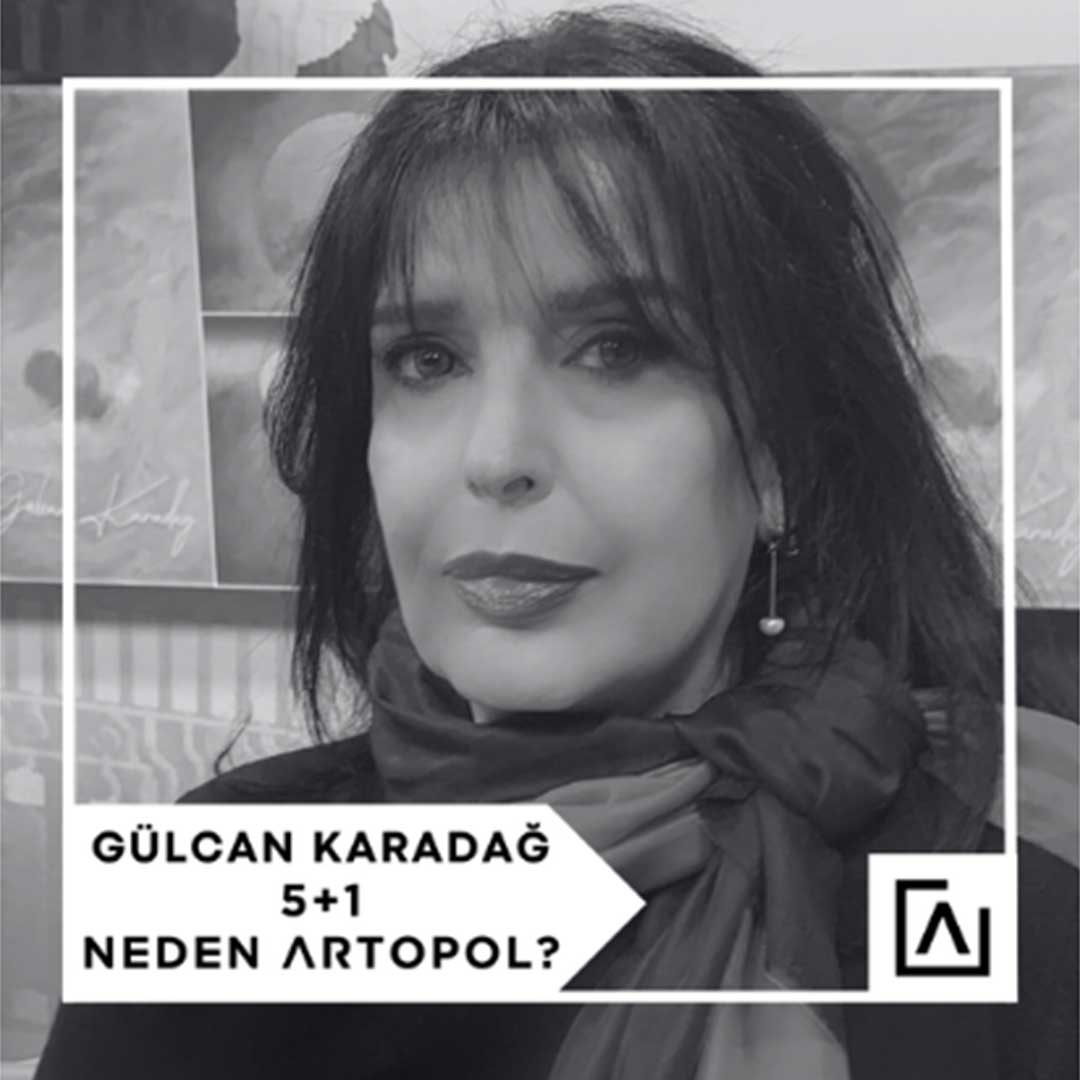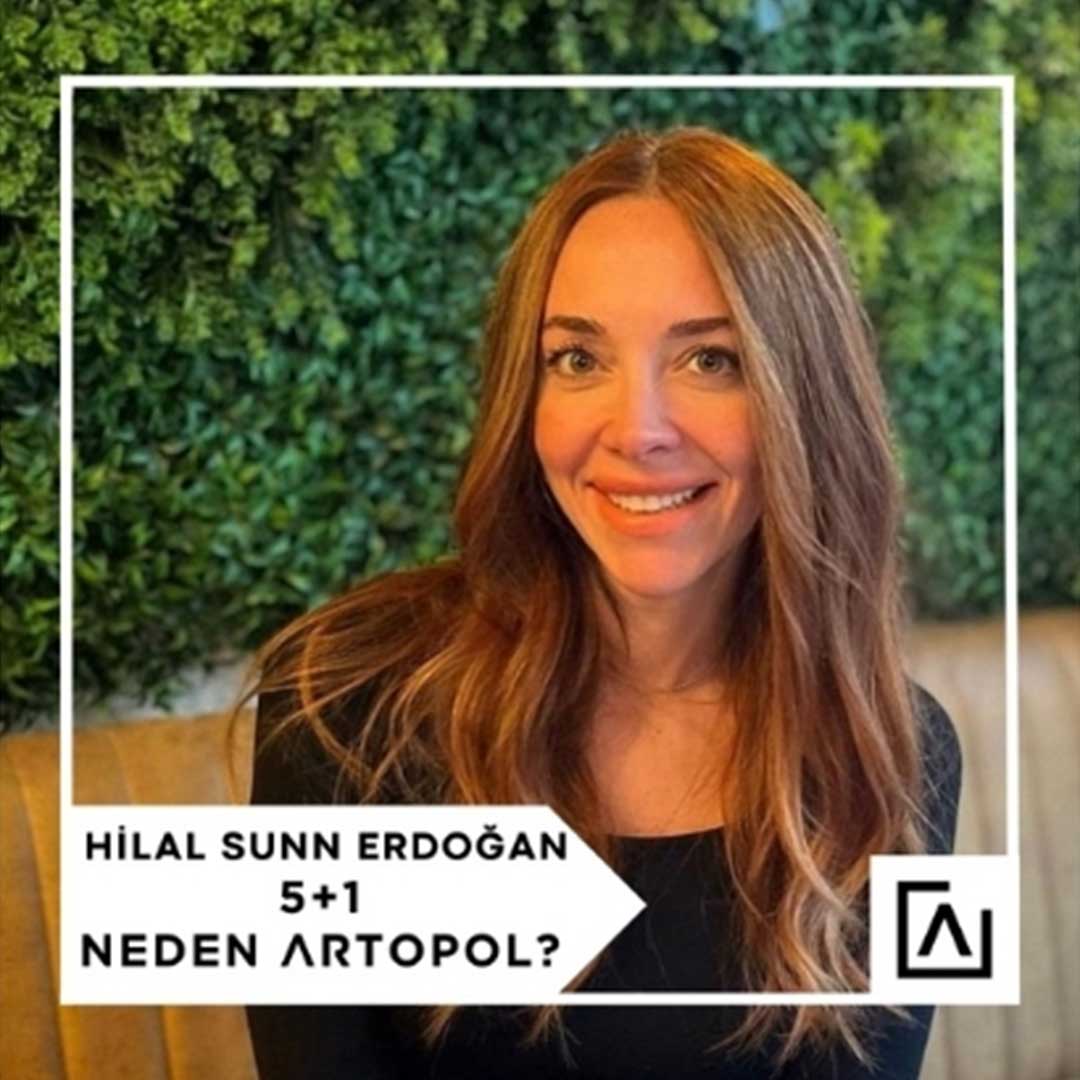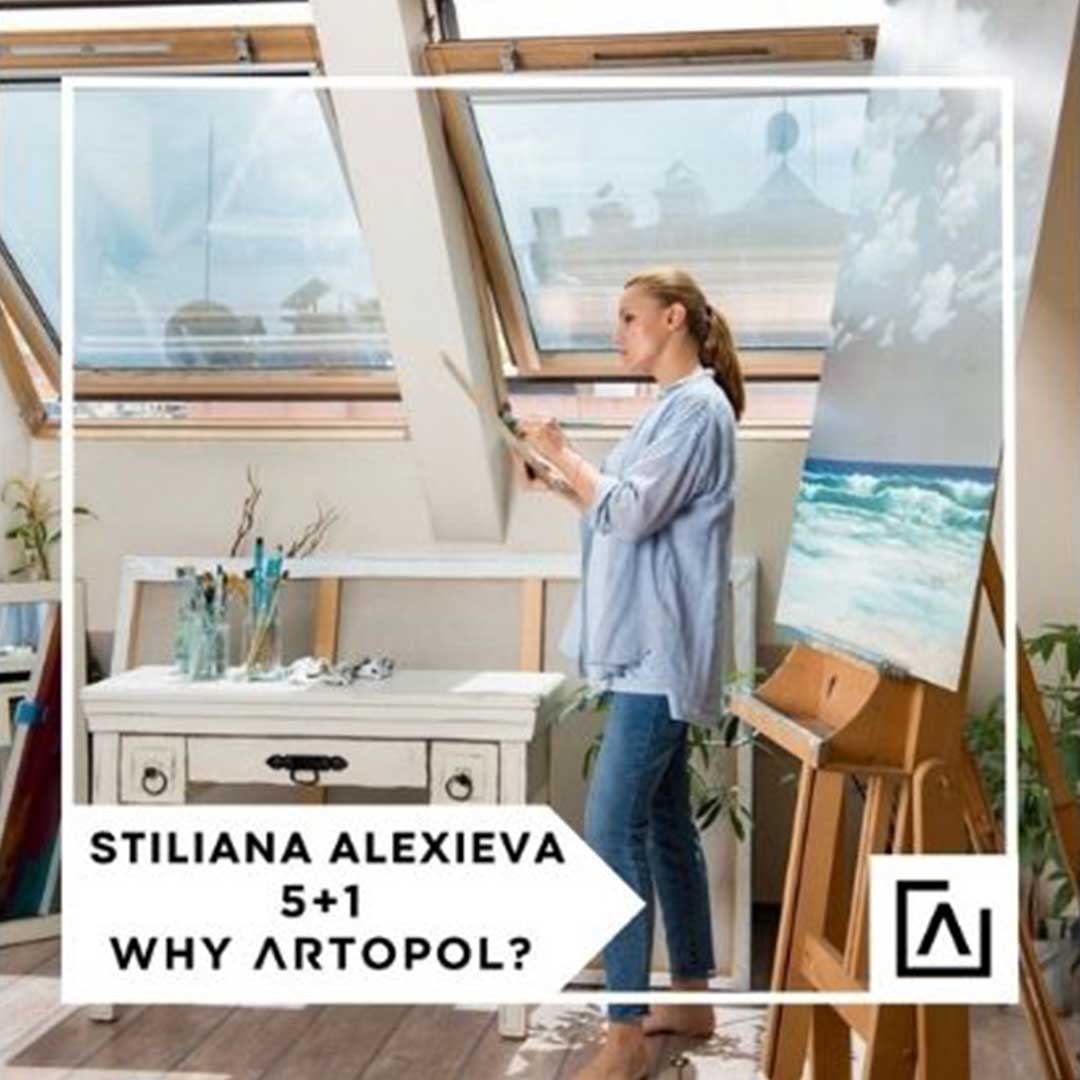Artopol Gallery: Why Artopol Gallery?
HATİŞ: Actually, I wasn’t an artist who worked with galleries before; I don’t think I fitted in that way. Of course, I had been part of some projects previously. Looking at Artopol and the gallery’s collection, I saw a contemporary, modern style and attitude. For that reason I thought we could travel together on this path. A gallery open to differences. That’s why I got in touch with Pınar Türker Uygun. When she saw my works and liked them, we found our first harmony. Afterwards I spoke about what I want to do in the future, about my other works. During our conversations, seeing that innovation is supported, I believed we could take stronger steps together. Because having a gallery that supports you in every sense gives confidence to the artist.
AG: Artopol’s priority is accessible art. As an artist, how do you evaluate that?
HATİŞ: Being accessible is a hopeful platform for us artists. We all use technology and social media. The viewer may not be able to attend an exhibition or any art event in person. Online events break those excuses and bring art almost up to where the audience is. Researching art, following events or artists is, at some point, a matter of audience’s interest. In such a period, galleries are in fact creating a new era through technology. Especially right now we are stuck in a closed box, but on the other hand we have begun to reach international audiences as well. Perhaps this situation has been a means of gaining visibility. Galleries turned this bad situation into an opportunity for us.
During this process, people began to take interest even in things they had not cared about before. New audiences have formed for the art world. I think this is a very positive trend.
AG: Do you think there’s a danger here? That during this time we’ve watched and consumed everything. For those who are newly interested in art, could this be a temporary enthusiasm? Will they now consume and move on, or will some durable art-lovers emerge among these audience members?
HATİŞ: At that point the artist has a lot of work to do. We consume too much, too fast. If the artist can be consistent, strong steps can be taken. But this must be distinguished from repeating oneself. It must not be “make it now, sell it now.” That should be something the artist does, not the viewer. Working in response to the viewer’s demands like that consumes both art and artist. So that’s something that ends up consuming the artist too.
AG: What you are saying leads us to the necessity of making correct and lasting strides in art. As an artist, how do you deal with this issue?
HATİŞ: For long-term and correct steps in art, the artist and gallery must also be compatible. Neither party should aim just to seize the moment; thinking more broadly is required. Price policies are important, the attitude of collectors and viewers is important — all are factors in fact. I do not change my style or attitude according to a viewer or a collector; what I mean by consistency is exactly that. In this way the artist makes both themselves and their art accepted and becomes lasting.
AG: What do you think about the online sale of artworks?
HATİŞ: I am an artist open to innovation. Being online makes accessibility easier, I think. I support using technology in a positive sense. In a way it removes the excuse of not being able to follow art. After all, in order to move the art market forward, to keep up with the times, innovations are essential. It’s also a method that should be preferred for preserving the work and for reliability.

AG: Hatiş, let’s also talk a bit about your works. Could you describe your works to us?
HATİŞ: We had an academic education, which allows us to build our foundation solidly. It strengthens our talent and creativity. According to the education we received, you are expected to stay within a certain mold, to continue the classical understanding of art. But I don’t want to be an artist who fits into those molds. I can use my technical knowledge, but I don’t want to confine my thoughts. I even believe I should be interested in other art branches. I imagine things, I create things in my mind and I wanted to bring them to life. This approach of mine was criticized; even the colors I used were seen as different. I used different objects, figures with colorful identities, icons, things that have a message. But I was lucky to work in a studio. The influence of the teachers in the workshop was great in making me use that many colors. Working in a studio that supported my use of color made me happy.
AG: Can we say the starting point of your works is color?
HATİŞ: Yes, I love using colors. One of the things that best represent colors is balloons. When I was a student at Mimar Sinan Fine Arts University, I had painted myself among balloons and my teachers liked it a lot. When they asked if I had seen them somewhere, I said “I believe balloons reflect my colorful world; I think they represent me.” So, during my student years the balloons appeared and my workshop teacher supported me and even asked me to make research on them. So, it was stated I should approach them consciously.
Following that, I researched colorful events, photographs and figures from events. I delved into art movements that use color heavily. In line with inspirations I received, I looked for figures that would overlap with balloons and colors because I didn’t want to create contrast while forming my compositions. I loved drawing figures. So I worked with colorful, creative persons. But I didn’t enter their psychology; I treated them too as objects.
In my master’s thesis, I studied “the color spectrum of the modern era.” Each color has both a physical and a psychological meaning. Painters can choose colors for a particular purpose. When you look at art history, the movement that uses colors with every art branch is pop art, and the usage of colors continues to this day. There are many examples; I discussed all of them in my thesis. We express many things with colors. Color is combined with technology as well. So colors are everywhere.
AG: Do you think there is a dangerous side to the issue of color? You use vivid and striking colors and this can easily capture the viewer. In an interaction that can be built with color like this, does it happen that the viewer misses what you really want to express?
HATİŞ: I’ve never experienced that, so I have never had concern in that direction. At least nothing reflected back to me. However, the psychology of colors has started to be questioned a lot. Sometimes messages I never thought of have been attempted to be imposed. Not because I shrink from giving a message or touching psychology. My works are not works in that direction; my world is not that anyway.
AG: Besides colors, do people interpret your paintings as a whole differently? When you face a completely different interpretation, how do you feel?
HATİŞ: I like it. It means they find something of themselves; my works mean something to them. I believe I touch both the visual memory and the heart of the viewer and that pleases me a lot. For example, they ask me, they want to know what I tell. First, I want to know what they think. Then I begin telling my story, but I also love that the viewer adds something of themselves to this story.
AG: If someone wanted to buy your work but you felt they didn’t understand it at all, what would you do? Would you prevent it? Is the artist-collector relationship important for you?
HATİŞ: I would be sad if such a thing happened, but would I prevent it, I don’t know. It depends somewhat also on how the process is. For example, if they see my work as a non-art object and completely disregard its artistic dimension, I would prevent it. Of course I’m not talking about purchasing for investment. Even then, an artistic approach is present after all. This is important for the art market too.
Also, I think interaction between the collector and the artist is a beautiful thing. I’d love to meet the art-lover who buys my works. I want to see where my works are placed. It’s not always possible to follow constantly, of course for an artist. Even if the viewer cannot interact with the artist in that moment, later, especially with important collectors, meeting through ‘our art’ would be very pleasurable, I think.
AG: How do you define your style?
HATİŞ: If I have to speak of a movement, I have a pop-surreal style. I move among movements. I also feed from the ideas of Impressionist artists. The colors and the iconic objects I use are close to pop art, but at the same time there is a surreal side to my works. Because I create a phenomenon that doesn’t exist. For that reason I define it as pop-surreal.
AG: How did you find your style then?
HATİŞ: In the period when I was forming my style clearly (that corresponds to my student years), the settings in my paintings were always outdoors. The objects I used were in open spaces. For a while I did stage/decoration and that influenced my art. Then the objects I used began to move into indoor space. The materials I used in decorations, the dream world I built in stage/decor affected my paintings. My concern for aesthetics has always existed. This approach has reflected more strongly in my paintings. The light I use changed too. I switched from daylight to stage lights. From natural light to spotlights, that is…

AG: How do you interpret the relationship between material and artwork? Looking at your art, what should we expect besides traditional materials?
HATİŞ: Even though I received a classical education, even though I use traditional materials like oil paint and brushes, I actually produce contemporary works. The subjects I work on, the objects I use catch up with our era. At this point I deviate from tradition. But while designing stage/decor, I approached technology and started to develop a technological attitude when painting with oil on canvas. I began drawing my designs on tablet. Actually, I first took this path by saying, “Anyway I graduated from painting department, I graduated from a department that forms the foundation of fine arts and I can broaden my talent outside of painting art. I am interested in other art branches, I follow them, I have ideas I want to bring to life, and I do every work I will do with love.” This introduced me to different fields, different perspectives, the different history of art and different materials used in each branch.
I am an artist and I own my other works too. My paintings influence my designs, my designs influence my paintings and they evolve in a positive sense.
For example; I also include the frames I use together with my paintings as part of the composition. They are three-dimensional material after all, material I use in my designs… When composing, one should not kill the other, being balanced is important. I choose the frames according to the painting, I paint them, I include them in my paintings. They interact together. Maybe this is a need that my design eye feels. Although I might not yet use technological material in my painting art, I am applying my paintings in technological art.
To summarize your question, I like being open-minded, using technological products where necessary. As long as it is art, I can continue producing with every material in every way.
AG: So the frames also carry your signature.
HATİŞ: Yes, they complete my painting. But I don't set out saying “I’ll be very different!” I know my own world. Since my student years, there has been no disconnect in my paintings. All my series have followed in order, all are substantial. Each has a sequential story. Therefore differences also carry that fullness.
AG: You mentioned that you have digital works too. Did they remain limited to stage/decor or have they become part of your art?
HATİŞ: I started with stage/decor in digital, yes. But I also wanted to see my own paintings in digital. I have a world I created in my mind, ideas and thoughts. I wanted to apply them digitally because I also enjoy using technology.
AG: Is digital art freer or is working on canvas freer? Can we compare them like that?
HATİŞ: I think they are the same. I cannot make such a comparison. Everything evolves, even canvas evolves. So it depends on the artist. What one wants to use and how. My use of digital was not instantaneous, it developed over time. It too evolved. There is a history behind me using technology. But digital has one advantage: I progress faster. After all, when I paint on canvas, there is a drying process of paints and I have to wait.
AG: Just like when you used stage/decor in your past, did using digital have an effect on your art? Did it affect your canvas?
HATİŞ: Of course, it affected. I can explain in the simplest way. I like working in different fields and in both fields I use my hands, my technique. Thus I have always preserved my practice. That itself is an effect. My eye opens, I develop ideas and I become enlightened.
AG: How does your working process begin? For example, you said there is a change in object preference. Are they also the ones who trigger the process?
HATİŞ: I can get energy from an object; I may begin by deforming it in my mind. Colors can also be a starting point. A color may catch my attention and I want to use it, I want to build my composition around that color. A material can also affect. In this regard I am not one-directional. Once I start thinking, paintings appear one after another in my mind. “After this painting, this one should come, then that one.” I let myself be carried away, and that series finishes in me. ‘Each of my objects gives birth to another object, each of my series gives birth to another series’ and this interaction has a large place in my art.
AG: You are essentially defining the foundation of your art right now.
HATİŞ: Yes, truly so.
AG: Being able to give such a clear definition, I think, shows that your “artist” identity has settled. When did you begin seeing yourself as an artist? Or when does someone who produces, who creates, become an artist?
HATİŞ: That differs from artist to artist. From my perspective, I felt it when something stuck to me. When I began to be remembered for something. For example, the balloons… When people said, “Balloons are by Hatiş!” … when I saw appreciation and a desire in viewers to own the works, I felt it. Appreciation is very important to me. Such recognition is also provided by consistency.
AG: And how do you view change? Could you come one day with a completely different series? As an artist who works heavily with objects and figures, do you think a day may come when you create abstract works?
HATİŞ: For now, I cannot even think of abstract art, but change surely happens. For example my small sweet balloons transformed into helium balloons. I didn’t abandon balloons but transformed them. I wore the balloons and now I’m adding new accessories onto my outfit. The frame is also part of the change in this sense. An object was included in the painting. There is consistency in my art, there is story, and all my stories are connected. I’m open to change yes but everything in order, the change also in order. Maybe one day I’ll turn to abstraction too.
AG: How do you define art? What is art for you?
HATİŞ: I think the concept of art also changes from artist to artist. Since the creator of art is the artist, one must first define what an artist is. An artist is someone who is a witness of their era, an observer. Someone who wants to leave a mark in their own time, who brings together the world they observe and the phenomenon they want to create, with intellect, creativity, and talent, producing. Art is the work that emerges from this union. This work can be an oil painting or a conceptual art piece.
AG: You are removing art from the monopoly of material and craft skill.
HATİŞ: Yes. If someone says “I am a very good pattern artist,” I check to see if their work matches what they say. If they align, then it is okay. If not, there will be question marks in me. I evaluate art and artist according to their manifesto, really. Because art is very diverse and we cannot look through a single window. We must evaluate each in its own specificity.
AG: That definition fits you very well. Since you are not just someone who does painting, you can consider art in a wide spectrum.
HATİŞ: Of course. I produce different things. Painting, stage design, digital art… I’m also interested in fashion art, I follow it and draw nourishment from it.
AG: In your full, rich world, how do you nurture your creativity? Do you ever get stuck? For example, how was the pandemic period in that sense?
HATİŞ: I examine artists I love, I look at contemporary art. Here again I don’t limit myself to only painting. I look into things that affect me, that push me into different thoughts. Essentially everything is included in what I say. For example fashion comes into play here, stage/decor too. I look at the stories behind artworks. All of this awakens new ideas in me. But not in a “Let me do this” way. I apply to my own style, I try to create continuity from it. Lately, the decorative backgrounds I started using emerged this way. For a long time I followed Jeff Koons’s balloons and had the opportunity to see them in Germany as well. An iconic balloon fits very well into my style. I start these works as a tribute to Koons. Innovations in all other art branches also affect me. I want to use the new icons, the designs, a makeup art, fashion, and so on.
AG: In your works we see iconic objects and reproductions of artworks. Like Duchamp’s urinal… You used it too. It would be nice to hear this side of art from you.
HATİŞ: Using iconic objects must be distinguished from copying. When I use them, I show that I have been influenced, and I dedicate the work to the artist of that object. The urinal is like that… Duchamp’s manifesto is so impressive for me, I saw the urinal as gold and made it gold. But I composed it with my own balloons and donuts. When I title my paintings I also express my inspiration.
AG: Just like Dalí’s Venus with Drawers…
HATİŞ: Yes yes. The world I create around that iconic object. Into that world I place the object that influenced me.
AG: Among the paintings that came out of this world, has there ever been one you are dissatisfied with, that you regret?
HATİŞ: I have no regrets but there are things I wish I had done differently when I was more conscious. To me, regret is something done consciously; maybe that’s why there is none. But I would have liked to make my student years more productive. Since I now work also in different art areas, I say maybe I should have taken classes from different fields when I was a student. Even my elective courses I chose from the painting department, but as someone who studied at Mimar Sinan University, I’d have liked to take classes from different departments of the school.
AG: Are there contemporary artists whose work you love, whose work you follow?
HATİŞ: Justyna Kisielewicz, a young painter from California, I like her works. But among those from the past, first Andy Warhol, Roy Lichtenstein and Tom Wesselmann’s art I really admire. I also take Manet’s ideas and his stance in art as examples. I was very influenced by those who broke the rules of that time, who could not be confined to molds. I have not wanted to conform to molds either. I have maintained this stance since my student years.
AG: Hatiş, this has been a very nice conversation. Thank you.
HATİŞ: It was for me too… Thank you.



